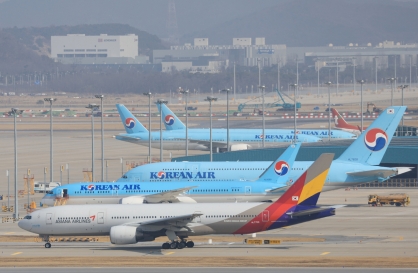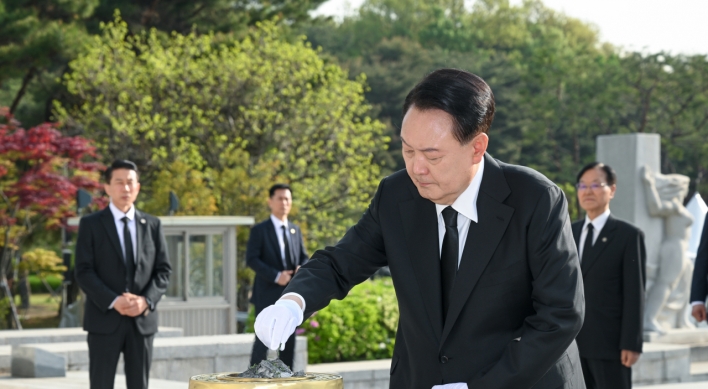[News Focus] Unemployment claims rise most in smaller cities, provinces
Smaller cities suffer more in employment upon pandemic
By Kim Yon-sePublished : Aug. 29, 2021 - 17:18

SEJONG -- The volume of government payouts for people who lost jobs has climbed sharply since COVID-19 pandemic hit the nation in January 2020, with recent monthly tallies outstripping the figures before the pandemic.
All eight major cities and nine provinces in South Korea saw increases in the unemployment benefit payouts. However, there were disparities in the size of the increase.
According to the Korea Employment Information Service, the number of recipients of unemployment benefits came to 687,970 in July. This marked a 61.7 percent increase from 425,390 in December 2019 (a month before the novel coronavirus hit the nation).
Data by region showed that payouts increased by a greater amount outside the Seoul metropolitan area, which includes Gyeonggi Province and Incheon.
The growth in the number of recipients stayed under the nationwide average in Seoul at 57.8 percent, in Gyeonggi Province at 57.2 percent and in Incheon at 49 percent.

The relatively low figures, which are below the average of 61.7 percent, are also seen in Daegu, which posted a 51.7 percent growth during the December 2019-July 2021 period, and in Busan with 56.4 percent.
While Gyeonggi Province is the nation’s most populous region, Seoul, Busan, Incheon and Daegu are the nation’s four largest cities.
In contrast, Daejeon posted 72 percent growth, while the number grew 67.1 percent Gwangju, 91.7 percent in Ulsan and 69.4 percent in Sejong.
A labor researcher in Seoul said that “compared with the Seoul metropolitan area, where conglomerates are clustered, non-Seoul metropolitan cities -- which have high portion of smaller businesses and the self-employed -- are thought to have taken a tougher hit from the pandemic.”
South Jeolla Province had 20,930 recipients in July 2021, compared with 10,599 in December 2019. This is a 97.4 percent increase, the highest among the nation’s 17 major areas (eight cities and nine provinces).
Alongside South Jeolla and Ulsan, Jeju Province made up top three regions with a growth of 82.2 percent.
Self-employed businesspeople take up a high proportion of Jeju residents. Particularly over the past decade, many small retailers including coffee shop owners, have rushed from the mainland to the nation’s largest island, who are estimated to have severely hit by COVID-19.
Among the other provinces that recorded figures above the national average, were South Gyeongsang Province with a 76.9 percent increase, South Chungcheong Province with 67.1 percent, North Jeolla Province with 66.9 percent and Gwangwon Province with 63.7 percent.
The pandemic has aggravated the worries over a possible depletion of the state funds to pay the unemployment benefits for the jobless, while the KEIS data showed that the payouts had already increased rapidly over the past decade, even aside from the aftermath of COVID-19.
In the early and mid-2010s, the government’s yearly payouts for jobless people ranged between 3.3 trillion won ($2.8 billion) and 4.5 trillion won ($3.8 billion). The figure recorded 4.67 trillion won in 2016 during the previous administration amid moderate growth in the volume of unemployment benefits.
But the situation began to change since 2017 as the nation saw microbusinesses close en masse in the wake of huge burden of labor cost from the drastic hikes in minimum wages.
Self-employed people accounted for about 25 percent of all working people and have faced a tight job market.
Unemployment benefits have increased sharply over the past three years, reaching 5 trillion won in 2017, 6.4 trillion won in 2018 and an all-time high of 8 trillion won in 2019.
While the 2019 figure marked a 72.8 percent surge compared with 2016, the yearly payouts jumped to 11.8 trillion won in 2020 amid the pandemic.
By Kim Yon-se (kys@heraldcorp.com)





![[From the Scene] Monks, Buddhists hail return of remains of Buddhas](http://res.heraldm.com/phpwas/restmb_idxmake.php?idx=644&simg=/content/image/2024/04/19/20240419050617_0.jpg&u=20240419175937)





![[Graphic News] French bulldog most popular breed in US, Maltese most popular in Korea](http://res.heraldm.com/phpwas/restmb_idxmake.php?idx=644&simg=/content/image/2024/04/18/20240418050864_0.gif&u=)


![[From the Scene] Monks, Buddhists hail return of remains of Buddhas](http://res.heraldm.com/phpwas/restmb_idxmake.php?idx=652&simg=/content/image/2024/04/19/20240419050617_0.jpg&u=20240419175937)

![[KH Explains] Hyundai's full hybrid edge to pay off amid slow transition to pure EVs](http://res.heraldm.com/phpwas/restmb_idxmake.php?idx=652&simg=/content/image/2024/04/18/20240418050645_0.jpg&u=20240419100350)

![[Today’s K-pop] Illit drops debut single remix](http://res.heraldm.com/phpwas/restmb_idxmake.php?idx=642&simg=/content/image/2024/04/19/20240419050612_0.jpg&u=)